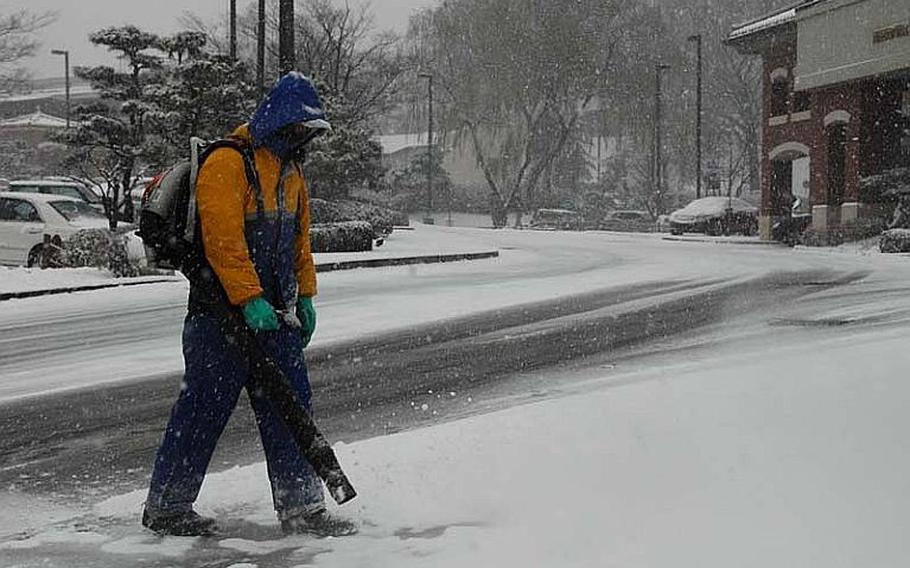Asia-Pacific
Snow hits South Korea earlier than usual, harsh winter predicted
Stars and Stripes December 5, 2012

A worker clears snow outside the Dragon Hill Lodge at U.S. Army Garrison Yongsan early afternoon of Dec. 5, 2012. The first major snowfall of the season led to snarled traffic and closed schools at the Seoul base. (Ashley Rowland/Stars and Stripes)
SEOUL — Snow snarled traffic at U.S. military bases across South Korea and led to closure of some Defense Department schools and non-essential services, marking the unofficial start of what forecasters say could be an unusually harsh winter.
Accumulations of 3 to 5 inches were expected across the peninsula, with additional snow possible in parts of the country Friday and Saturday, according to the 607th Weather Squadron.
At U.S. Army Garrison Yongsan, all Department of Defense Education Activity schools were closed in anticipation of bad weather. Snow began to fall fast and heavy around noon, and uniformed soldiers pushed some cars through slick patches. Yongsan schools will be on at least a two-hour delayed start Thursday for students and employees, according to DODEA-Pacific spokesman Charles Hoff said.
As of Wednesday afternoon, most other schools in South Korea were operating on a normal schedule.
Temperatures in Area II, which includes Seoul, were expected to drop to the mid-20s Wednesday and reach only the upper 20s Thursday.
This week’s cold snap follows the coldest November in nine years, with temperatures averaging nearly eight degrees below the same month last year, according to the Korea Meteorological Administration.
The KMA also is predicting an especially cold December and January, with heavy snow in some areas.
KMA forecaster Jang Hyun-sik blamed the cold stretch on the influence of melting ice in the Arctic Ocean. That melting contributes to increased southernly airflows from Siberia into much of Asia, including the Korean peninsula.